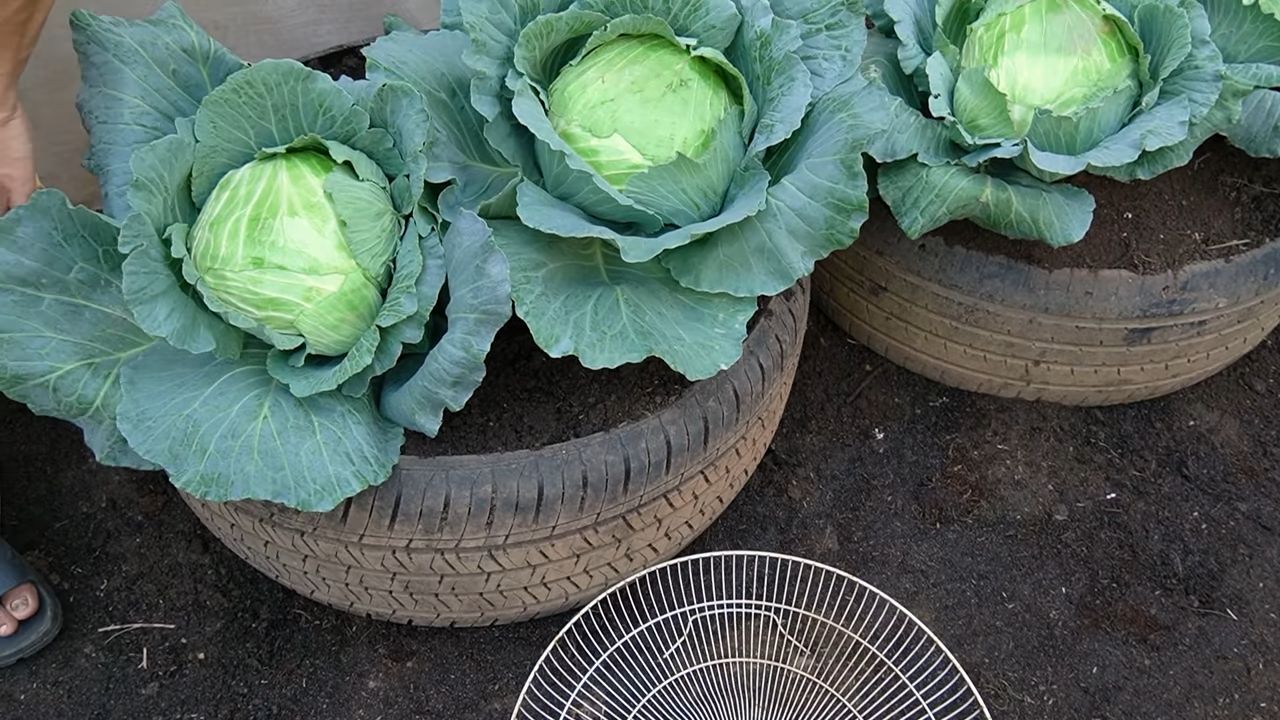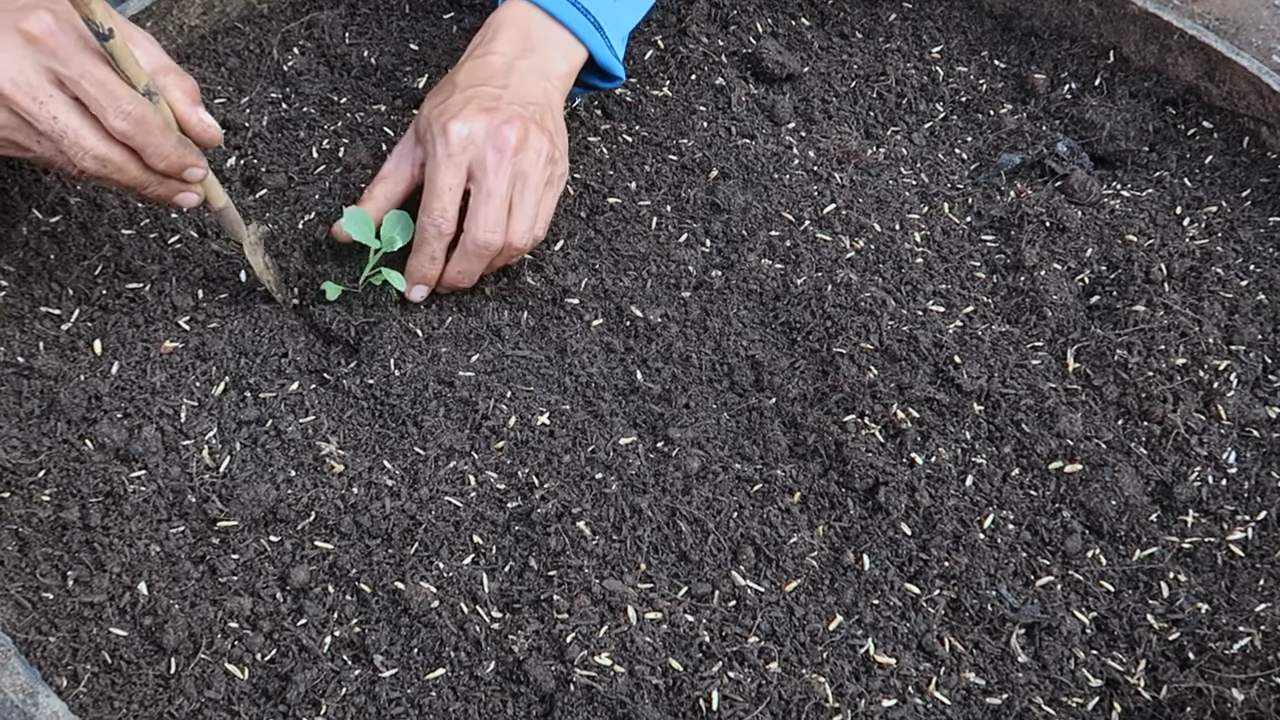Store Cabbage Longer? Absolutely! I know what you’re thinking: “Cabbage? Really?” But trust me, this humble vegetable is a nutritional powerhouse and a staple in so many delicious dishes. From hearty stews to crisp slaws, cabbage is incredibly versatile. However, its shelf life can be a real downer. We’ve all been there – you buy a beautiful head of cabbage, only to find it wilting and sad in the crisper drawer a few days later.
Historically, cabbage has been a lifesaver for communities worldwide, especially during harsh winters. Think of sauerkraut in Germany, kimchi in Korea, or even simple boiled cabbage in Ireland – these are all testaments to cabbage’s ability to sustain and nourish. Preserving it effectively was crucial for survival.
That’s where these DIY tricks come in! Nobody wants to waste food, especially with rising grocery costs. Learning how to store cabbage longer not only saves you money but also reduces food waste, which is a win-win for everyone. I’m going to share some simple, effective methods that will keep your cabbage fresh and crisp for weeks, so you can enjoy its goodness whenever you want. Get ready to unlock the secrets to cabbage longevity!

How to Keep Cabbage Fresh for Weeks: My Foolproof DIY Method
Okay, let’s be honest, cabbage is a kitchen staple, but it can be a real pain to keep fresh. I’ve tried everything – plastic bags, crisper drawers, you name it. But nothing seemed to work for more than a few days before it started to wilt and smell funky. That’s when I decided to experiment, and after a few tries, I finally cracked the code! This method is super simple, uses materials you probably already have, and will keep your cabbage crisp and delicious for weeks. Trust me, this is a game-changer!
What You’ll Need:
* A head of cabbage (obviously!)
* Paper towels (the thicker, the better)
* A large, airtight container or a large, sturdy zip-top bag (gallon-sized is usually good)
* A sharp knife
Step-by-Step Instructions:
Here’s the breakdown of how I keep my cabbage fresh for ages. Follow these steps, and you’ll be amazed at the results!
1. Inspect Your Cabbage: Before you do anything, give your cabbage a good once-over. Look for any bruised or damaged leaves on the outside. If you see any, gently peel them off and discard them. We want to start with the freshest possible base.
2. Don’t Wash It (Yet!): This is crucial! Resist the urge to wash the cabbage before storing it. Moisture is the enemy here. Washing it will introduce excess water, which will speed up the spoilage process. We’ll wash it right before we use it.
3. Prepare the Paper Towels: Grab a few paper towels – I usually use about 3-4, depending on their thickness. Fold them in half or thirds, so they create a nice, absorbent layer. These paper towels are going to be our moisture-wicking heroes.
4. Line the Container: Place the folded paper towels at the bottom of your airtight container or zip-top bag. Make sure they cover the entire bottom surface. This is where any excess moisture from the cabbage will be absorbed.
5. Place the Cabbage: Gently place the whole head of cabbage on top of the paper towels in the container or bag. Try to position it so that it’s not crammed in there too tightly. You want some airflow around it.
6. Add More Paper Towels (Optional, but Recommended): For extra protection, I like to add another layer of folded paper towels on top of the cabbage. This helps absorb any moisture that might condense on the lid or inside of the bag.
7. Seal It Up: If you’re using an airtight container, make sure the lid is securely fastened. If you’re using a zip-top bag, squeeze out as much air as possible before sealing it. The less air in the container, the better.
8. Store in the Fridge: Place the container or bag in the crisper drawer of your refrigerator. The crisper drawer is designed to maintain a higher humidity level, which is ideal for storing vegetables like cabbage.
9. Check and Replace Paper Towels (Every Few Days): This is the key to long-term cabbage freshness! Every 2-3 days, take the cabbage out of the container or bag and check the paper towels. If they feel damp or soggy, replace them with fresh, dry paper towels. This is super important because damp paper towels will actually promote mold growth and spoilage.
10. Enjoy Your Fresh Cabbage! When you’re ready to use the cabbage, simply wash it thoroughly under cold water and prepare it as you normally would. You’ll be amazed at how fresh and crisp it still is, even after several weeks!
Troubleshooting and Tips:
* Why is my cabbage still wilting? If you’re still experiencing wilting, it could be due to a few factors. First, make sure your paper towels are thick enough and absorbent enough. Thin paper towels might not be able to absorb enough moisture. Second, check your refrigerator temperature. If your fridge is too warm, it can speed up the spoilage process. The ideal temperature for your refrigerator is between 35-38°F (1-3°C). Finally, make sure your container or bag is truly airtight. If air is getting in, it can dry out the cabbage.
* Can I use this method for cut cabbage? While this method works best for whole heads of cabbage, you can still use it for cut cabbage. However, cut cabbage tends to spoil faster than whole cabbage, so you’ll need to be extra diligent about checking and replacing the paper towels. Make sure the cut edges are covered with paper towels to prevent them from drying out. I would recommend using cut cabbage within a week, even with this method.
* What if I see mold? If you see any signs of mold on the cabbage, discard it immediately. Mold can spread quickly and can be harmful to your health. Don’t try to salvage the cabbage by cutting off the moldy parts. It’s better to be safe than sorry.
* What kind of container should I use? I prefer using airtight plastic containers because they’re durable and easy to clean. However, you can also use glass containers or sturdy zip-top bags. Just make sure whatever you use is airtight to prevent the cabbage from drying out.
* Can I use cloth towels instead of paper towels? While you could technically use cloth towels, I don’t recommend it. Cloth towels tend to retain more moisture than paper towels, which can actually promote spoilage. Plus, they can be more difficult to clean and sanitize.
* What about different types of cabbage? This method works well for all types of cabbage, including green cabbage, red cabbage, and Savoy cabbage. However, some types of cabbage may have a slightly shorter shelf life than others. For example, Savoy cabbage tends to be more delicate than green cabbage and may not last as long.
* Don’t overcrowd the crisper drawer: Make sure your crisper drawer isn’t overcrowded. Overcrowding can restrict airflow and lead to uneven cooling, which can speed up spoilage.
* Consider the initial quality: The fresher your cabbage is when you buy it, the longer it will last. Look for heads of cabbage that are firm, heavy, and have tightly packed leaves. Avoid cabbages that are wilted, bruised, or have yellowing leaves.
Why This Method Works: The Science Behind the Freshness
So, why does this simple method work so well? It all comes down to controlling moisture. Cabbage, like most vegetables, contains a lot of water. As it sits in the refrigerator, it naturally releases moisture. This moisture can create a humid environment that promotes the growth of bacteria and mold, leading to spoilage.
The paper towels act as a moisture barrier, absorbing any excess moisture that the cabbage releases. This helps to keep the cabbage dry and prevents it from becoming soggy and spoiled. The airtight container or bag further helps to control moisture by preventing air from circulating around the cabbage. This reduces the rate of evaporation and helps to keep the cabbage hydrated without becoming waterlogged.
By regularly checking and replacing the paper towels, you’re ensuring that the cabbage is always stored in a dry environment. This significantly slows down the spoilage process and allows you to enjoy fresh cabbage for weeks.
Beyond Cabbage: Adapting the Method for Other Vegetables
The principles behind this method can also be applied to other vegetables that tend to spoil quickly, such as lettuce, spinach, and broccoli. The key is to use absorbent materials to wick away excess moisture and to store the vegetables in an airtight container or bag.
For leafy greens like lettuce and spinach, I recommend washing them thoroughly and then spinning them dry in a salad spinner before storing them. This will remove any excess water that could lead to spoilage. Then, wrap them in paper towels and store them in an airtight container or bag.
For broccoli, I recommend storing it in a container with a small amount of water at the bottom. This will help to keep the broccoli hydrated without becoming soggy. Just make sure to change the water every day or two.
Experiment with different techniques and find what works best for you and your favorite vegetables. With a little bit of effort, you can significantly extend the shelf life of your produce and reduce food waste.
I hope this helps you keep your cabbage fresher for longer! Happy cooking!

Conclusion
So, there you have it! Mastering the art of storing cabbage longer is not just a kitchen hack; it’s a game-changer for reducing food waste, saving money, and ensuring you always have fresh ingredients on hand for your culinary creations. We’ve explored a simple yet incredibly effective DIY trick that will transform how you approach cabbage storage. No more slimy, wilted leaves greeting you from the crisper drawer!
This method, focusing on maintaining optimal humidity and preventing excess moisture buildup, is far superior to simply tossing your cabbage in the fridge and hoping for the best. It’s a proactive approach that extends the life of your cabbage significantly, allowing you to enjoy its crisp texture and vibrant flavor for weeks, not just days.
But the beauty of this DIY trick lies not only in its effectiveness but also in its adaptability. Feel free to experiment with different types of absorbent materials. While paper towels are a readily available option, consider using reusable cloths or even specialized produce storage bags for an even more eco-friendly approach. You can also adjust the frequency of checking and replacing the absorbent material based on the humidity levels in your refrigerator. If you live in a particularly humid climate, you might need to change it more often.
Furthermore, consider the size of your cabbage. For larger heads, you might want to use multiple layers of absorbent material or even divide the cabbage into smaller portions for easier storage. Remember, the key is to create a barrier against excess moisture while still allowing the cabbage to breathe.
We’ve also touched upon the importance of selecting a fresh, firm cabbage in the first place. Starting with a high-quality ingredient is crucial for maximizing the effectiveness of any storage method. Look for cabbages with tightly packed leaves, a vibrant color, and no signs of bruising or damage.
Now, it’s your turn to put this DIY trick to the test! We are confident that you’ll be amazed by the results. Imagine the satisfaction of pulling out a perfectly crisp cabbage weeks after purchasing it, ready to be transformed into a delicious slaw, stir-fry, or hearty soup.
Don’t just take our word for it, though. We encourage you to try this method and share your experiences with us. Let us know in the comments below how long you were able to store your cabbage using this trick, any variations you tried, and any tips or tricks you discovered along the way. Your feedback is invaluable and helps us refine and improve our recommendations.
By embracing this simple yet powerful DIY trick, you’re not just storing cabbage longer; you’re also taking a step towards a more sustainable and efficient kitchen. So, go ahead, give it a try, and let us know what you think! We can’t wait to hear your success stories. Happy cooking!
Frequently Asked Questions (FAQ)
How long will cabbage last using this DIY storage method?
Typically, a whole head of cabbage stored using this method can last for several weeks, often up to a month or even longer, in the refrigerator. This is significantly longer than the typical storage time of a week or two without any special precautions. However, the exact duration will depend on the initial freshness of the cabbage, the humidity levels in your refrigerator, and how diligently you maintain the absorbent material. Regularly checking and replacing the paper towels or cloths is crucial for maximizing the storage time.
What type of cabbage works best with this storage method?
This method works well for all types of cabbage, including green cabbage, red cabbage, Savoy cabbage, and Napa cabbage. However, keep in mind that different varieties may have slightly different storage characteristics. For example, Savoy cabbage, with its looser leaves, might require a bit more attention to ensure proper moisture control. Regardless of the type, always start with a fresh, firm head of cabbage for the best results.
Can I use this method for cut or shredded cabbage?
While this method is primarily designed for whole heads of cabbage, it can also be adapted for cut or shredded cabbage. However, cut cabbage tends to spoil more quickly than whole heads, so the storage time will be shorter. To store cut cabbage, wrap it tightly in plastic wrap or place it in an airtight container lined with paper towels. Change the paper towels regularly to absorb excess moisture. Expect the cut cabbage to last for about 3-5 days using this method.
What if I don’t have paper towels? What else can I use?
If you don’t have paper towels, you can use other absorbent materials such as clean kitchen cloths, reusable produce storage bags, or even newspaper. The key is to choose a material that can effectively absorb moisture without imparting any unwanted flavors or odors to the cabbage. If using cloths, make sure they are clean and dry before wrapping the cabbage. Reusable produce storage bags are a great eco-friendly option, as they are designed to regulate humidity and extend the shelf life of produce.
How often should I check and replace the paper towels or absorbent material?
The frequency of checking and replacing the paper towels or absorbent material will depend on the humidity levels in your refrigerator. In general, it’s a good idea to check every few days and replace the material whenever it feels damp or saturated. If you live in a particularly humid climate, you might need to check and replace it more often. Neglecting to replace the absorbent material can lead to moisture buildup, which can promote spoilage and reduce the storage time of the cabbage.
Is it necessary to wash the cabbage before storing it?
It’s generally not recommended to wash cabbage before storing it, as excess moisture can promote spoilage. If the cabbage is visibly dirty, gently wipe it clean with a damp cloth instead. Washing the cabbage right before you plan to use it is the best approach.
What are the signs that my cabbage has gone bad?
Signs that your cabbage has gone bad include a slimy texture, a foul odor, discoloration, and wilting leaves. If you notice any of these signs, it’s best to discard the cabbage. It’s also important to note that even if only a few outer leaves are affected, the rest of the cabbage may still be safe to eat, provided it looks and smells fresh. Simply remove the affected leaves and use the remaining portion.
Can I freeze cabbage?
Yes, you can freeze cabbage, but it’s important to blanch it first to preserve its texture and flavor. To blanch cabbage, cut it into wedges or shred it and then submerge it in boiling water for 2-3 minutes. Immediately transfer it to an ice bath to stop the cooking process. Drain the cabbage thoroughly and then pack it into freezer bags or containers. Frozen cabbage can last for up to 12 months. However, keep in mind that the texture of frozen cabbage may be slightly softer than fresh cabbage, so it’s best used in cooked dishes such as soups, stews, and stir-fries.
Does storing cabbage longer affect its nutritional value?
While some nutrient loss may occur during storage, the impact is generally minimal, especially when using proper storage techniques. Cabbage is a good source of vitamins C and K, as well as fiber and antioxidants. Storing it properly helps to retain these nutrients for a longer period.
What are some creative ways to use up cabbage before it goes bad?
There are countless delicious ways to use up cabbage! Some popular options include coleslaw, stir-fries, soups, stews, sauerkraut, and cabbage rolls. Cabbage can also be added to salads, sandwiches, and wraps for a crunchy and nutritious boost. Get creative and experiment with different recipes to find your favorite ways to enjoy this versatile vegetable.




Leave a Comment